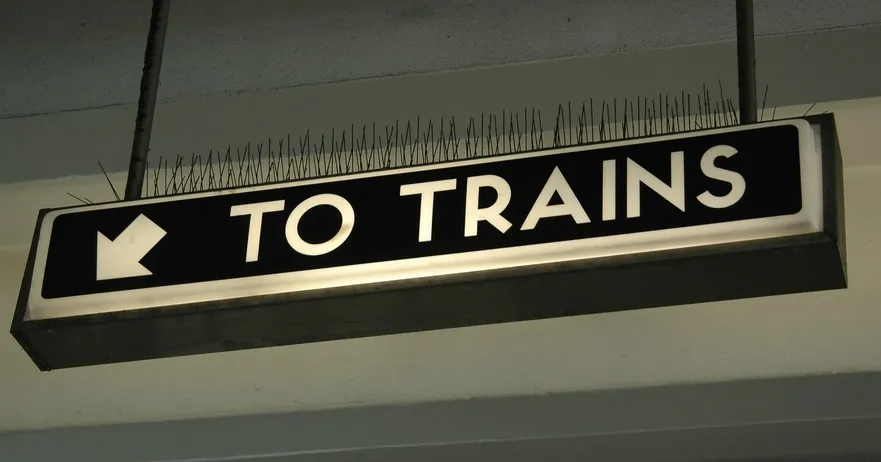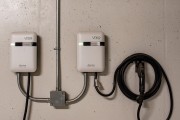This week Toronto Transit Commission (TTC) chair Karen Stintz made a bold move, with the support of 24 councillors, to hold a special council meeting today to confirm the 2009 memorandum of agreement for the city’s former light rail plan.
Earlier this week, we released Making Tracks to Torontonians 2012 to ensure the transit debate could be informed by numbers and metrics outlining the costs and benefits to Torontonians, rather than politics.
The following Q&A draws on data from our latest report to address some questions that have been circulating about the various transit options on the table for Toronto.
Q. How much money do we have to spend?
 A. The province originally committed $8.4 billion, most of the funding to deliver phase one of the light rail transit (LRT) plan. An additional $300 million is being contributed by the federal government, bringing the total to $8.7 billion.
A. The province originally committed $8.4 billion, most of the funding to deliver phase one of the light rail transit (LRT) plan. An additional $300 million is being contributed by the federal government, bringing the total to $8.7 billion.
The 2011 memorandum of understanding signed between Mayor Ford and the province was for $8.2 billion. Building the mayor’s proposed Sheppard subway line would be an additional expense, as it is not included in the provincially funded transit budget over the next 20 years. A KPMG report (PDF) reviewing funding for the Sheppard subway line found that there are no other easy or immediate sources of funding available.
Q. Does burying the Eglinton LRT line increase its ridership?
A. We anticipate that a completely buried Eglinton LRT would increase ridership by approximately 37 per cent (14 million riders/year) since it would offer faster and more reliable service. However this increase would cost $2 billion, which could be spent more effectively on other project to bring transit to other parts of the city and have a greater impact on overall ridership. For example, using this $2 billion to build the Sheppard and Finch LRT lines would deliver transit access to 21 million riders a year and would serve 200,000 more Torontonians.

Q. What is the best way to follow through on the mayor’s promise of a subway to Scarborough?
A. Mayor Rob Ford has consistently said a subway along Sheppard to the Scarborough City Centre is his preferred approach to improving transit in Scarborough. Our analysis however shows that since an LRT extends further east through Scarborough than the subway, the LRT would serve more people
In addition, building an LRT would get rapid transit to Scarborough much sooner; the Sheppard LRT was due for completion by 2014, while there is no timeline for the completion of a Sheppard subway expansion. Finally, the density along Sheppard is insufficient to support a subway. Sheppard East currently has a density of about 68 people and jobs per hectare, which is well below the density threshold of 115 people per hectare that is required for a subway to be economical.
If the goal is to bring rapid transit to Scarborough as soon as possible, above ground rapid transit offers the most expedient and sensible solution.

Q. What is the most cost effective option for Finch?
A. With bus rapid transit (busway), the peak ridership on Finch is expected be between 2,300 and 2,800 customers. A busway can meet this demand, but would require short time gaps between buses which would lead to congestion and inefficiency along the route, making this option less attractive and reliable for potential riders. Light rail, on the other hand, can effectively move 8,000 passengers per hour in each direction, more if the city operates multi-vehicle trains. With the increased speed, comfort and capacity of LRT, Metrolinx anticipates a peak ridership of 4,500 customers for Finch, which would be a significant increase compared to the ridership of the same route served by busway.

Q. What is the difference between light rail and a streetcar?
 A. Light rail and streetcars often get lumped together as the same technology, but that is far from the truth. The primary difference is that light rail trains operate in right-of-way lanes and typically have signal priority. This helps minimize their impact on traffic and vice versa. Light rail stops are also typically further apart than streetcar stops; this makes light rail more reliable, faster and more commuter-friendly. Because of the frequency of the stops and the speed at which the trains travel, light rail also offer a strong positive impact on urban development.
A. Light rail and streetcars often get lumped together as the same technology, but that is far from the truth. The primary difference is that light rail trains operate in right-of-way lanes and typically have signal priority. This helps minimize their impact on traffic and vice versa. Light rail stops are also typically further apart than streetcar stops; this makes light rail more reliable, faster and more commuter-friendly. Because of the frequency of the stops and the speed at which the trains travel, light rail also offer a strong positive impact on urban development.
 Furthermore, light-rail is a transit technology of choice around the world. World-class cities such as Paris, Amsterdam and Madrid use LRT, as do a number of North American cities including Boston, Calgary, Dallas, Houston, Los Angeles, Ottawa, Philadelphia, San Diego, Seattle and Washington, D.C.
Furthermore, light-rail is a transit technology of choice around the world. World-class cities such as Paris, Amsterdam and Madrid use LRT, as do a number of North American cities including Boston, Calgary, Dallas, Houston, Los Angeles, Ottawa, Philadelphia, San Diego, Seattle and Washington, D.C.
Q. Should we ever build underground?
A. Just because our analysis shows that Toronto’s limited funds are not well spent burying transit on Sheppard or Eglinton does not mean that moving transit underground is bad investment everywhere.
Subways make sense if there is adequate population density and ridership to warrant it. Take a look at the following table that shows population density relative to type of transit. The Yonge-Spadina line has already exceeded the capacity of the current subway, while the Scarborough area — even at projected growth — will not reach the necessary density levels within the next 20 years.

While analyzing data for all of the transit lines currently on the table, we also examined data for the Downtown Relief Line. Part of Metrolinx’s 25-year plan, the Downtown Relief Line would be a new subway connecting downtown with Bloor in the west and Danforth in the East. With the assumption that this line would cost $350-million per kilometre (a rate that is in keeping with current estimates for subway construction), it offers the best cost efficiencies of any line examined. The table below compares the metrics of this line with the LRT plan and the subway plan.

While the Downtown Relief Line would result in greater ridership, it leaves out critical corners of the city and may not have the same impact on commuter congestion in the outer reaches of Toronto that would be served by the LRT plan.
Picking the right plan for Toronto’s transit needs
The LRT plan was originally conceived to make the best use of a limited budget with the goal of bringing rapid transit to all corners of Toronto, serving low-income populations that do not have access to transit. This plan brought additional benefits, including reduced greenhouse gas emissions and improved air quality. As outlined in the Q&A above, there are other ways to spend the same provincial money, but those transit options would not deliver the same overall benefits to Torontonians.
While busways are less expensive and faster to build, compared to light rail they have a negative impact on air quality and do not increase capacity along currently crowded bus routes such as Finch. Busways are also less effective than light rail at attracting new riders and promoting urban renewal.
When properly situated, subways can move the most people and offer the fastest commutes — but they also come with a price tag which we cannot currently afford. Building new subway lines now would mean that Toronto would have to further delay critical transit construction and deny transit to areas that desperately need it. Expanding Toronto’s subway system requires careful consideration of what corridors can properly support a subway, since building subways in neighbourhoods without the density to support them is needlessly expensive.








